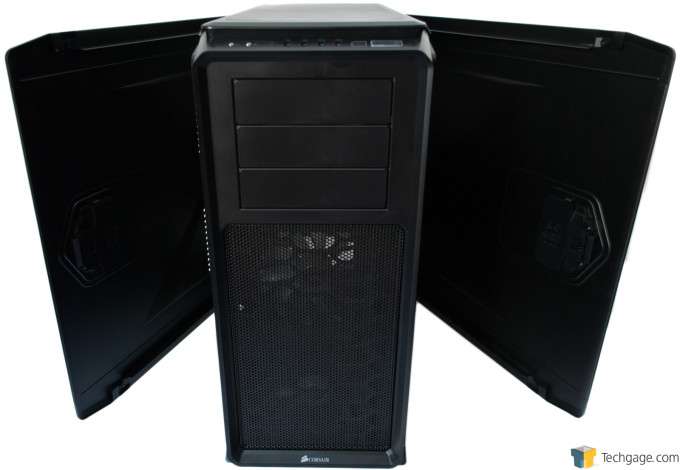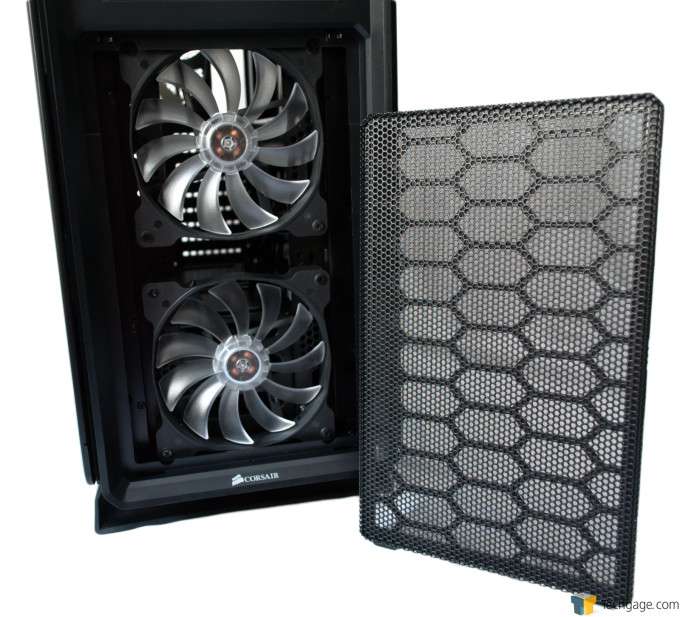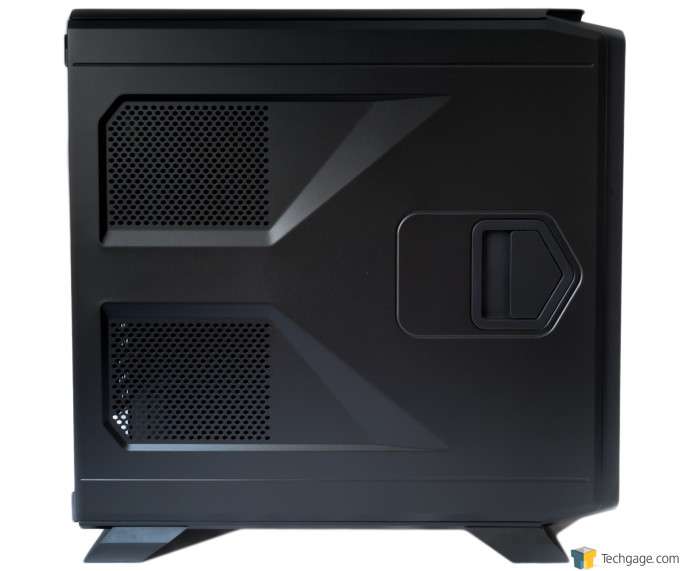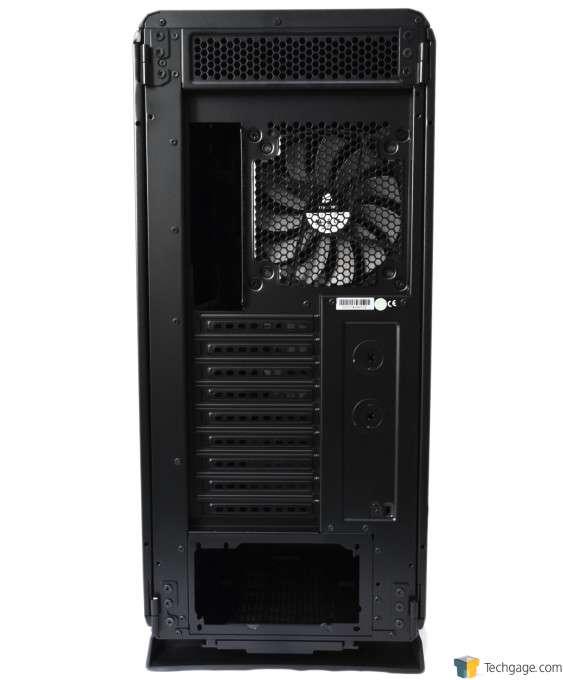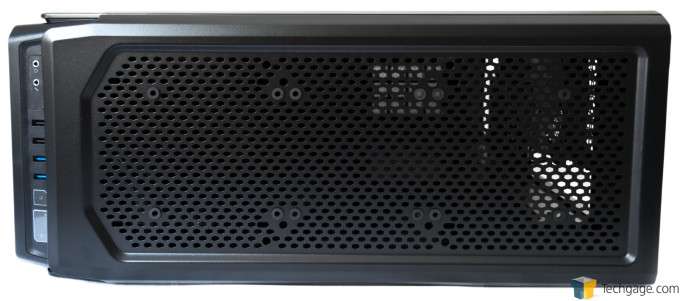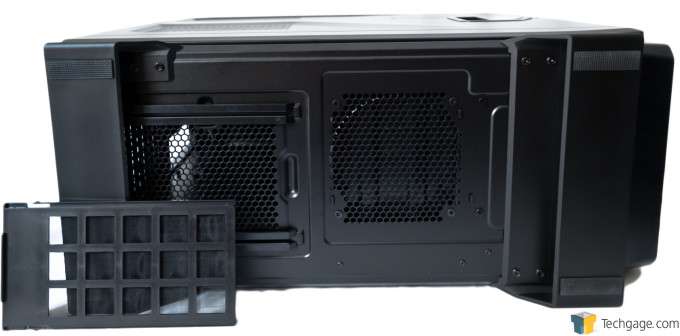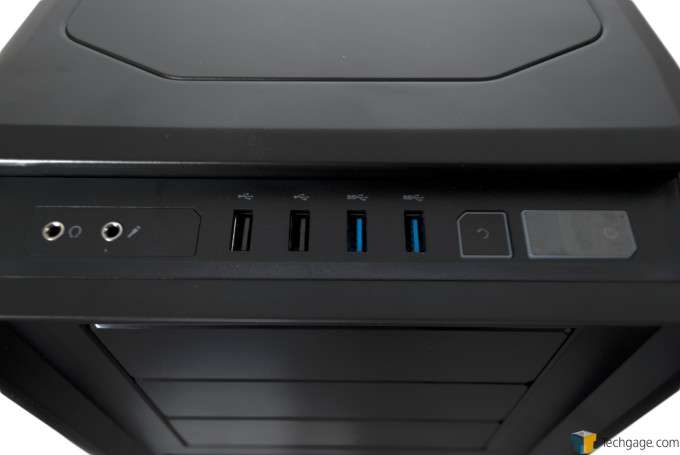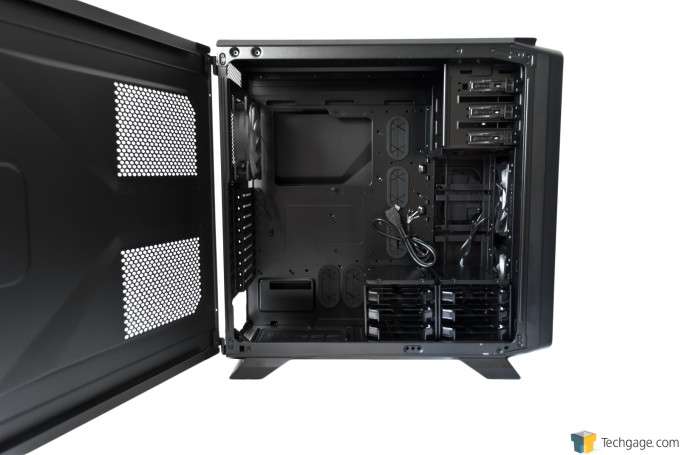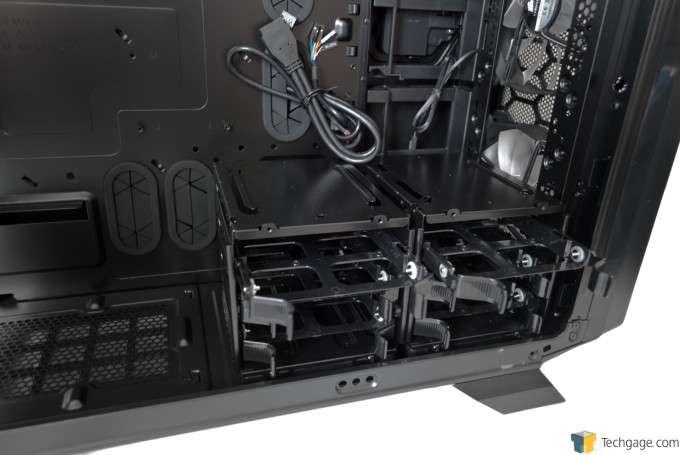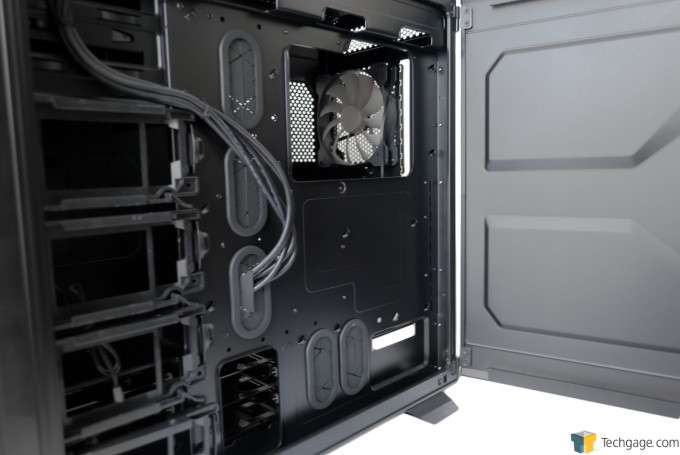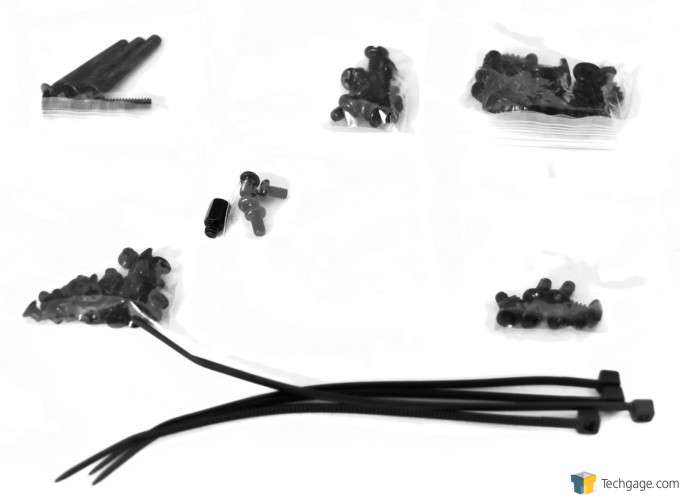- Qualcomm Launches Snapdragon 4 Gen 2 Mobile Platform
- AMD Launches Ryzen PRO 7000 Series Mobile & Desktop Platform
- Intel Launches Sleek Single-Slot Arc Pro A60 Workstation Graphics Card
- NVIDIA Announces Latest Ada Lovelace Additions: GeForce RTX 4060 Ti & RTX 4060
- Maxon Redshift With AMD Radeon GPU Rendering Support Now Available
Tall, Dark, and Handsome – Corsair Graphite 730T Full-Tower Chassis Review

PC chassis really aren’t that complicated, but it’s so hard to design THE perfect one. It’s really all about the details. In the relatively brief time Corsair’s been selling them, the company has gotten those details right more often than not. Will this trend continue with the Graphite 730T? Read on to find out.
Page 1 – Introduction
PC chassis are just so interesting.
No, seriously!
Sure, on the one hand you can say that it’s really the simplest among all of a PC’s components. It’s often the lone all-mechanical component, devoting the barest minimum of its being to electrical wires and contact points for switches and I/O ports. On the other hand, for as mechanically simple as a chassis is (it is just a box, after all), there is a ton of wonderful engineering that goes into them. Not only that, but it’s also the most overtly aesthetic part of your PC. It’s probably one of the few components that you pick almost solely for how good it looks.
Corsair has been in the PC chassis market for a relatively short time; its five years of battle for market share pales in comparison to what companies like Lian Li, Cooler Master or SilverStone have put in. Nevertheless, Corsair has already made a few chassis that can be classified as true classics. The Obsidian giants 800D and 900D surely belong on my personal short list of great chassis designs. I bought an Obsidian 700D years ago, and it remains one of my all-time favorites.
So I was delighted when I drew the assignment to review a chassis from Corsair’s Graphite series, the 730T. It joins the 780T and 760T as the full-tower big boys of the Graphite series.
This will be Techgage’s second look at a member of the Graphite series. My esteemed co-staffer, Ryan Perry, reviewed the very striking Special Edition White Graphite 600T in June 2011. He liked it so much, it hosted his personal PC for a couple of years.
That makes me wonder about how I’d feel about the Graphite 730T once I’m done reviewing it, actually.
Let’s have a look at it, then, shall we?
The first thing of note is that while the Graphite 730T shares some of its Obsidian cousins’ visual DNA (visually imposing and black, a bit like the monolith from 2001: A Space Odyssey, though there is a white+black version as well), it also has its own distinct flavor. For one thing, the aesthetic is a lot busier. The front view is dominated by the mesh air intake, behind which is a pair of Corsair’s own 140mm AF140L LED fans. Where the Obsidians are renowned for their simple, elegant contours, the Graphite 730T is sculpted and layered from almost every angle. There are scoops and bulges everywhere, and almost every edge is beveled. Note the hinged side panels. There are certainly lots of visual elements at work, but the overall effect is pleasing, a good mix of beautiful form and well-engineered functionality.
Removing the front mesh to access the pair of 140mm fans is simplicity itself. Just push in the top of the mesh, and voila, the catches release and you can remove the mesh for cleaning, or for removing/installing the intake fans.
Here you can see the left side panel view. It is virtually identical to the right side panel; the only difference is the presence of two perforated intakes meant to feed the CPU and GPU areas with air.
Moving on to the rear view, the most notable features are the ventilation holes near the roof of the chassis as well as the nine PCI expansion slots. The holes near the top of the chassis will allow hot air to escape easily. The nine expansion slots, meanwhile, are appropriate for a full-tower chassis. The exhaust fan is a Corsair 140mm model, though you can install a 120mm one if you prefer.
The top of the Graphite 730T is interesting. It is normally covered with a rigid plastic panel which is held in place with magnets (quite like the air filters on its cousin, the Obsidian 450D). This is more a vanity plate than anything; keep it on if you want to keep your Graphite 730T looking clean and sleek, or take it off if your system needs maximum ventilation or if you mount fans or a radiator on the roof.
Looking at the 730T’s bottom, you can see the ventilated floor and the two full-width skids which function as the chassis’ feet. The rear-most vents are protected with a slide-out air filter.
The front I/O cluster is located on the top front edge of the fascia. The 3.5mm audio ports are on the left; going to the right there are a pair of USB 2.0 ports, a pair of USB 3.0 ports, the reset button, and the power switch. It’s a very modern I/O cluster.
Turning our attention to the interior now, we can see that the Graphite 730T is all-black. It sports a lot of innovations first seen in the original Corsair chassis, the mighty Obsidian 800D, in particular the grommet-covered cable management holes (five in total) and the CPU backplate access cut-out. It also has a permanently installed key standoff, which helps make motherboard installation absolutely foolproof. This view of the interior also shows the two modular hard drive cages, both of which can hold up to three 3.5″/2.5″ drives. Just above them are three of the four 2.5″ SSD sleds which are actually mounted on the rear side of the motherboard tray, a feature I first saw on the Obsidian 450D.
Poking out of one of the grommets are the all-black I/O cables, a touch I personally adore. It’s obvious from this photo that you can fit pretty much any graphics card inside the Graphite 730T. Less obvious is the fact that you can stack the two hard drive cages, in case you want to free up the floor space for whatever reason, or remove them completely. The hard drive cages are attached to the floor by screws. As far as motherboard compatibility is concerned, the Graphite 730T can accommodate mini-ITX, mATX, ATX, EATX, and XL-ATX motherboards.
Here is a close-up of the hard drive cages with their top sleds withdrawn. Storage drive installation is completely tool-free.
This shot shows the rear of the motherboard tray. There is a full-inch gap between the rear of the motherboard tray and the side panel, which should ease cable management greatly. On the left of the photo are the four SSD sleds.
Finally, here we have a photo of the accessories included in the Graphite 730T. There are several baggies of assorted screws, as well as four zip-ties. Not pictured is a quick-start guide.
Now that we’ve had our visual tour of the Graphite 730T, let’s install a system into it, run some performance tests on it, and have some final thoughts.
Support our efforts! With ad revenue at an all-time low for written websites, we're relying more than ever on reader support to help us continue putting so much effort into this type of content. You can support us by becoming a Patron, or by using our Amazon shopping affiliate links listed through our articles. Thanks for your support!




